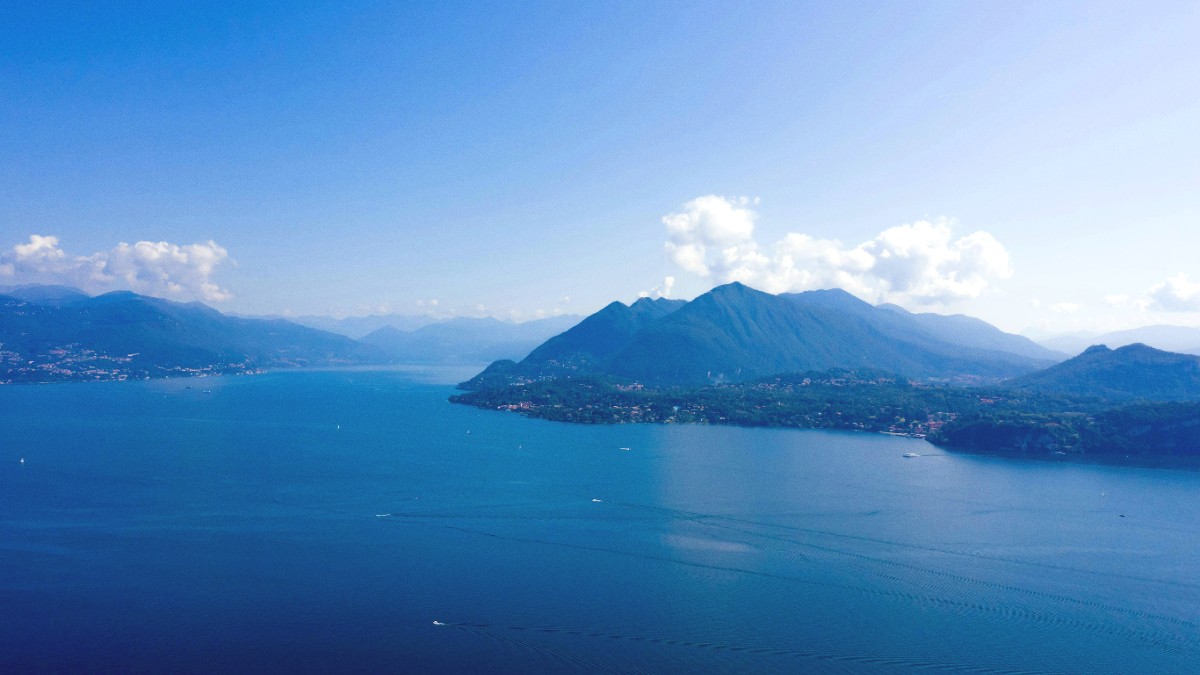
Lombardy And The Lakes, Italy
More than just a body of water, Lago Maggiore presents a mosaic of experiences: tranquil boat trips, exhilarating mountain views, delectable regional cuisine, and the warmth of Italian hospitality. Consider a visit to this spectacular setting, where every view appears postcard-perfect and every moment extends an invitation to relaxation and discovery. This guide highlights the best of Lago Maggiore, making your journey seamless, rewarding, and full of lasting memories.
The region presents an unique convergence of alpine majesty and Mediterranean charm. Lush gardens contrast with snow-capped peaks, offering views unlike any other. Travelers find a blend of historic elegance and local life across its shores.
The destination features iconic island palaces, rich botanical gardens, and a calm lake environment ideal for relaxation or engaging in water activities. The pace here is slower than Italy's bustling cities, offering a chance for immersion in nature and history.
Lago Maggiore ranks as Italy's second-largest lake, a magnificent ribbon of water extending approximately 65 kilometers (40 miles) from north to south. Its extensive length leads to diverse landscapes and experiences along its shores. From the bustling elegance of Stresa in the south to the more rugged, alpine-influenced northern reaches, movement along the lake presents continuously changing vistas and atmospheres.
The lake is an unique geographical position, resting on the southern side of the Alps. The mountains form a dramatic shield, protecting the lake from colder northern winds and creating a microclimate where lush, subtropical vegetation thrives. This convergence of alpine and Mediterranean characteristics establishes stunning contrasts, with palm trees alongside distant snow-capped peaks.
Italy's deepest lake, reaching 372 meters (1,220 feet).
Receives water mainly from the Ticino River.
A natural boundary shared by Piedmont, Lombardy, and Switzerland.
Mountains shield the lake, supporting subtropical plant life.
From wide open waters to fjord-like sections.
The lake's main water supply comes from the Ticino River, flowing into its northern end and exiting at its southern tip near Sesto Calende. Other significant tributaries include the Toce River, from Val d'Ossola, and the Maggia River, originating in Switzerland. These rivers contribute to the lake's pristine water quality and carve picturesque valleys inland, offering further exploration for hikers.
Stresa, on the western shore, stands as the most famous town. It features elegant grand hotels, a beautiful promenade, and serves as the main entry point to the Borromean Islands. Verbania, slightly north, is the largest town with a local atmosphere, encompassing Pallanza (villas, Villa Taranto Botanical Gardens) and Intra (historic center, busy port). Arona, on the southern Piedmont shore, presents a relaxed, local feel with a charming promenade and the towering Colossus of San Carlo Borromeo. Cannobio, further north, is a picturesque medieval town with a lovely promenade and a Blue Flag beach.
Luino, on the eastern (Lombardy) shore, is famous for its extensive weekly market. Luino presents a more authentic, less tourist-centric glimpse into local life. The lake's northern tip also extends into the Swiss canton of Ticino, adding a unique cultural flavor and different legal framework to its uppermost towns, such as Locarno and Ascona. This cross-border nature makes for easy day trips into Switzerland.
Navigating the lake by ferry or car presents an evolving panorama, from wide, open waters to narrow, fjord-like sections nestled between mountains.
Lago Maggiore's history stretches back to ancient times, with Roman settlements along its shores. Its strategic position, between the Alps and the plains of Lombardy, established it as a natural crossroads. In Roman times, the lake served as an useful path for trade and military movements, connecting the Italian peninsula with lands north of the Alps. This early importance established the lake as a place of passage and cultural exchange.
Over centuries, various noble families and powerful states sought control over its shores, recognizing its economic and strategic worth.
Evidence of Roman settlements points to early strategic significance for trade and military.
The aristocratic Milanese family transformed the islands into magnificent estates and gardens.
From the 18th century, a popular retreat for Europe's elite, with grand hotels built.
In recent history, Lago Maggiore saw a role in World War II. While not a main battleground, its location near the Swiss border and within northern Italy, which experienced intense conflict, meant it had activity and served as a route for refugees and resistance fighters.
Lago Maggiore presents a full European lake experience, blending natural grandeur with rich cultural heritage. Its shimmering waters, framed by alpine peaks and lush gardens, extend an invitation to a wide range of activities, from leisurely ferry rides to invigorating mountain hikes.
Alpine peaks, lush gardens, and expansive lake views create a picturesque backdrop.
Opulent palaces, historic towns, and local markets await discovery.
From leisurely boat rides to invigorating mountain excursions.
Expect a friendly reception from locals. Learning a few basic Italian phrases will enrich your interactions.
Outside the main tourist centers, the area maintains an authentic Italian atmosphere.
The beauty of the landscape merges with centuries of human endeavor, promising a memorable visit.